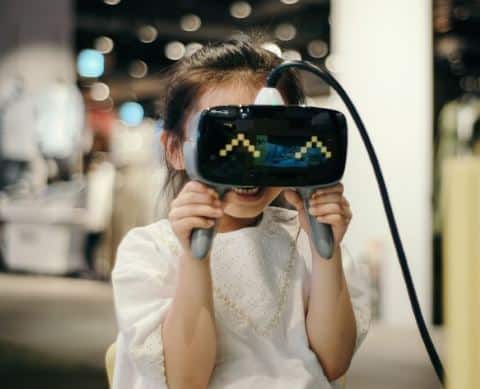
Virtual Reality (VR) is a technology that is gaining more and more popularity with each year passing. It is not only used in gaming and entertainment, as one might think, but has also found its way to benefit healthcare, education, real estate and various other industries. I thought it would be suitable to honor the onset of VR by listing out some interesting facts and use-cases for the technology.
Get comfortable and be ready to be immersed into the wonderful world of virtual reality!
1. The origins of VR trace back to the 19th century
People have been fantasizing about Virtual Reality ever since 2D paintings depicted drawings of dynamic landscapes ( and probably before that ). The aim has always been to deepen the experience of the viewer to new depths.
While the idea has been around for a while it wasn’t until the mid 20th century that we began to see VR headsets that resemble what we mount on our heads today.

In 1950, an inventor by the name of Morton Heilig, developed what is known as the Sensorama. This contraption is similar to an arcade-style theater cabinet. Although it was big and clunky it allowed the user to stimulate the senses in uncommon ( at the time ) ways.
It wasn’t until 1960 that Heilig came out with a more portable option known as the Telesphere Mask. This was really the first portable head-mounted display (HMD). The mast featured stereoscopic 3D wide vision and stereo sound. This would pave the way for future iterations, creating smaller, faster, and overall better versions.
2. “Gen Z” and “Millennials” aren’t the only ones showing interest in VR
As relatively new technology in terms of commercial use, it’s easy to assume that VR is only for young adults, who have a particular affinity for technology.
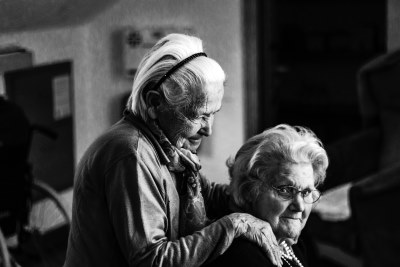
While this may make up the majority of the VR user demographics, this means that there’s a gap within the market for VR experiences targeted towards elders.
Chris Brickler, Silicon Valley vet and Co-founder of MyndVR came up with the idea of going after this market segment. He notes that more than 10,000 people are retiring every day. Along with a team of scientists from the University of Texas at Dallas, Brickler conducted trials with more than 300 individuals aging 60 – 100.
Their findings lead them to create content which would be both recreational, and therapeutic. He notes that the experiences are aimed at creating an atmosphere of well-being.
“Agitation is a big side effect that comes with Alzheimer’s and dementia”
It can also function as a form of escape, for those who reside in elderly patient care centers. Those who’ve used MyndVR often describe the experience as uplifting and educational. The users can explore an array of simulated environments, or follow specifically designed programs.
3. Brands are jumping on the VR bandwagon
Brands that understand psychology-based marketing are quickly hopping aboard the VR bandwagon – and for good reason. It’s expected that by 2020, one-third of global consumers will be using virtual reality.
Virtual reality is unlike any technology we’ve seen thus far. Via creating virtual environments, VR is able to provide unique and memorable experiences to users in creatively inspired ways.
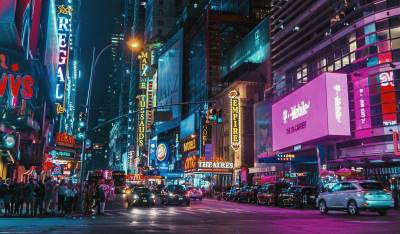
The point of virtual reality is to simulate an environment. More specifically it’s aimed at tricking the brain and body into believing that you’re actually experiencing the environment. This is referred to as ‘presence‘. Think back to a moment in your life where you were completely present in a given moment. VR developers know that there isn’t anything like this “flow state”.
For the majority of human civilization, we’ve depended on stories to pass information, and entertain one another. One of the greatest challenges brands have with telling a compelling story is the inability to maintain the user’s attention long enough.
With VR, brands will be able to fashion unimaginable storylines that engage in our emotions and create ‘calls to action’ (CTA), the likes of which we’ve never seen.
4. VR is taking design prototyping to a new level
Companies within the automotive industry are always in a race against time. Consumer demands, competition and a host of other variables force the processes to be as efficient as possible.
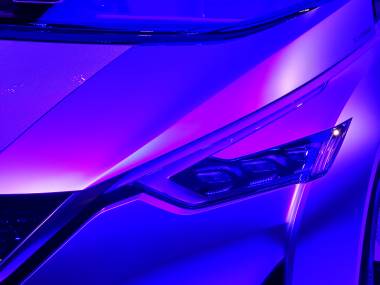
Design errors during the conception are a major problem as they eat away at this crucial time. When these errors do happen, it’s the conception team that’s responsible to re-iterate the design in order to achieve functional performance.
Virtual programs such as desktop CAD, help to reduce build time of physical prototypes. The implementation of VR not only reduces the time further, but allows for even more advantages. (1) The design of the vehicle can be viewed at scale. (2) Location-independent collaborative cross-site reviews can be held at any time. These two features alone drastically reduce cost and time spent in production.
5. VR is having an impact in the medical field

Surgical practitioners will often resort to using cadaver’s as a means of learning and trying out new procedures. Although this can work, it’s unrealistic to simulate the reaction of a living host. VR allows doctors to come up with models of potential surgeries for the purpose of training and better explaining procedures to surgical residents.
Beyond the physical aspect, VR is quickly finding use as a mental health treatment option. VR exposure therapy has been used with positive results as a method of treating patients suffering from PTSD and anxiety.
6. VR will make your vacation like never before
When you plan your vacation, what do you typically do? Compare and contrast a bunch of travel websites, browse through endless pictures of getaway destinations. Watch some YouTube travel videos. Probably all of the above.
By using your VR headset on websites such as Realities.io, Ascape, and YouVisit, you’ll be able to have an immersive experience. Typical forms of browsing simply won’t have the depth or nuance you need to make an educated decision.

The destination isn’t the only part of your journey you can make better with VR. Emirates Airlines and some others provide 360-degree immersive booking options. This lets you get a better sense of what you can expect during your travels.
7. VR is the new medium for Architects
When designing a building it’s important to capture the essence of the finished project. This initial essence is presented to clients before the final project is ready. As it turns out, this can be the hardest part.

There are typically a number of stakeholders within a given project ( more if the project is commercial). Communicating the architect’s vision with a 2D, or 3D rendering doesn’t fully translate all of the nuances the architect is planning for the site.
When VR technology is used in architecture, several options become available. First, by having a fully immersive environment built to scale, clients get a full and detailed view of what the project will look like once complete.
Just like in design and prototyping, there are revisions when it comes to architectural projects. By communicating the potential designs with clients revision becomes seamless and on the fly.
8. You can upgrade your poker game with VR

Most people have at least heard of online poker. It’s just like real poker but without all of the things that make poker really fun. Sites like Pokerstars VR allow you to engage in games with other players in a host of exotic environments.
This allows for a truly global experience, as you can play against real opponents. It’s unclear whether the site supports body tracking technology should a player use a feedback suit, but this is definitely the future of online VR poker. The best part – Pokerstars VR is free!
9. Recruiting with VR could be the new way to hire

In 2017, Lloyds Banking Group decided to experiment with the way they recruited recent grads. Besides typical recruitment efforts, the bank launched an exercise where grads would be interviewed and assessed via VR.
Although VR probably isn’t there in terms of replacing physical interviews, this is definitely a leg up from the traditional method of applying online. The growth of VR recruitment would mean that employers could save money on recruiting practices, and have a better method for observing and onboarding talented candidates.
10. VR will let you experience entertainment like never before
One thing that the entertainment industry is excellent at is finding new ways to entertain us. Now that you have an understanding of what VR is capable of, you can imagine the level of depth VR will be able to offer viewers.
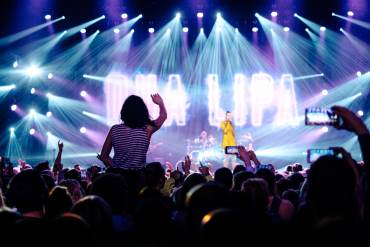
360-degree view and surround sound mean total immersion. Imagine how the emotional connection that you’ll be able to achieve with the storyline, the main character, and the environment. Disney Movies VR is a great example of this.
Similar effects will be possible with the likes of concerts and music festivals. One of the residual feelings that make going to a music festival so great, is the energy of those around you. As VR gets better, the feeling of being within a group ‘a part of something greater‘ will simultaneously increase and allowing users to be connected in ways that were previously impossible.
11. New levels of art and design with VR
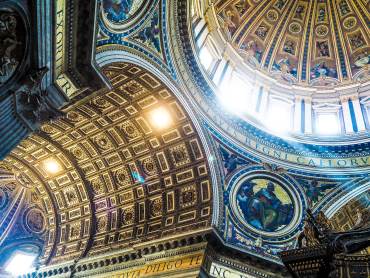
Art has always been about pushing the boundary and exposing the emotion of the artist to the viewer. Those who’ve studied art before will know that creating works of art is akin to placing or taking away layers until the desired expression is reached.
VR has the capability to take this level of abstraction above and beyond what can be done with contemporary art.
Although this application is relatively new, there are already many unique ways in which artists are creating works of art. Check out some of the amazing artwork creating using the VR application Tilt brush.
12. VR is changing the way we have conferences
Upselling tickets due to scarcity is a common practice for conference events to perform when seating is low. But wouldn’t it be so much cooler if there could be infinite seating? Using VR for the purpose of attending a conference enables any amount of people to be present in the same space at the same time.
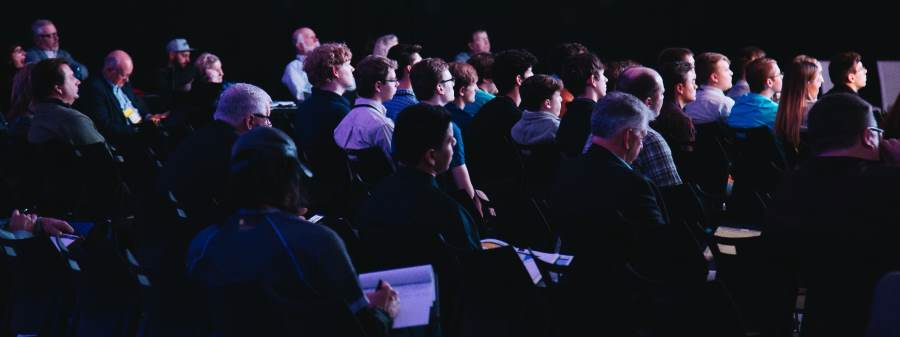
A similar real-world example of applying VR technology in such a way was the Mobile World Congress in 2016. Attendees wore VR headsets as they attended the ceremonial launch of the Samsung & S7 edge smartphones.
13. Immersive virtual environments can lead to greater well-being
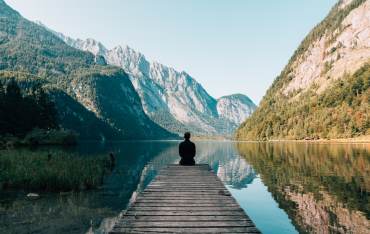
Meditation, breathwork, and yoga are methods which we use to ground our body and mind for optimal performance and all around well-being. Because VR has immersive properties it would then make sense to deepen the practice of meditation and yoga.
Guided Meditation VR from Oculus is currently one of the most popular applications for the purpose of mindfulness. The display wraps the user with beautiful 360-degree images as the soothing music guides the meditation.
14. VR is expanding social circles
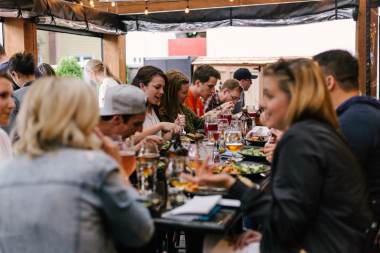
If you spend a few days in solitary confinement, you’ll soon realize the deep need for human beings to connect with one another. We crave to socialize whether we like to admit it or not. This is why social networks have become so popular so quickly. Using VR to expand our social horizons means we’ll be able to interact in new and unique ways.
Companies such as High Fidelity, vTime, AltspaceVR, Oculus Rooms and Parties and VRchat have started working on these social communities. AltspaceVR currently stands at the top as one of the most popular social VR platforms. They host regular community meet-ups and even host themed get together to keep the interest flowing.
15. VR is revolutionizing the way we raise capital for charity
Remember the point about how brands can use VR to inspire people to have a greater interest in the brand? This works along the same lines. People often donate to charity because they’re moved. VR has the power to spark empathy in people, allowing them to relate like never before.
One popular example of this was in 2015 when UNICEF used the ‘Clouds Over Sidra’ video to increase donations towards the Syrian Refugee Crisis.
16. VR is helping create training simulations, improving the police efficiency
Law enforcement can be a dangerous career if you’re a field officer. Scenarios can differ immensely. The ability to re-create these scenes with VR allows trainees to experience high-stress situations in controlled environments.
The VR training program “Apex Officer” claims that their training simulator increases on-field effectiveness by 300%.
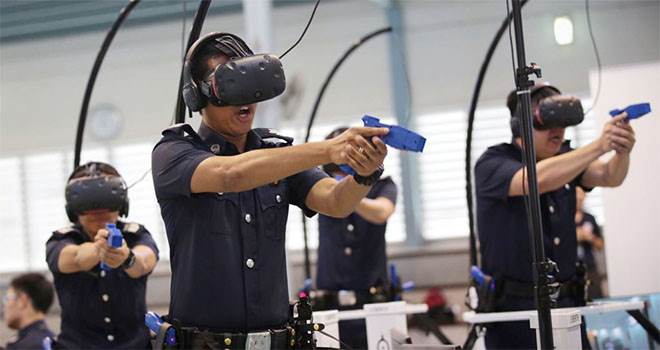
The effectiveness of the program lies within the depth of training simulations available. Similar to first-person shooter VR games, Apex uses faux standard firearms and equipment to emulate real-world environments.
17. VR arcade gaming on the rise
Perhaps you’re interested in doing some VR gaming, but aren’t particularly interested in purchasing a VR set?
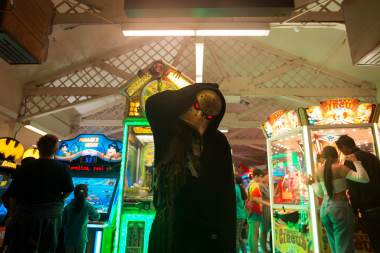
VR arcades are quickly gaining momentum among the community of gamers. Arcades typically feature an arrangement of VR counsels pre-loaded with a number of games. Like traditional internet cafes, you typically pay for the amount of time you spend playing.
According to SuperData Research, the industry is rapidly growing and has earned $286.7 million in 2018. Researchers predict that this number could grow into a $2.3 billion by 2020.
Although arcade VR hubs are not currently widespread, they’re slowly building a community of enthusiasts and can be found off the streets of any major city.
More to Come
Right now we’re seeing a massive explosion of VR in numerous sectors. As the technology itself matures we’ll see an even larger application – probably things we can’t imagine right now. Chances are at some point in your life VR will become a commonplace object just like your computer and smartphone.
Related Articles
- 9 ASTOUNDING VIRTUAL REALITY BENEFITS
- APPLICATIONS OF VIRTUAL REALITY IN MEDICINE
- EXTENDED REALITY (DETAILED OVERVIEW)
- 3 SEDUCTIVE VR GIRLFRIEND GAMES FOR A LONELY HEART
- ADVANTAGES OF VIRTUAL REALITY IN EDUCATION
